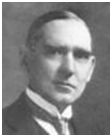For instance, the patient whose chronic remedy is Sulphur will need that remedy some time regardless of autogenous treatment. Although oral administration is safest, vaccines, correctly selected and given hypodermically, frequently cause as spectacular a reaction as does the best homoeopathic prescribing. The homoeopathist can avoid all dangers by, first, potentising the vaccine; second, being sure it is specific; and, third, by not repeating it as long as improvement continues.
Frequently the specific nosode will cure an acute infection quicker than our older remedies. The nosodes of all the pneumonia types have been potentised and have been used with gratifying results during the past winter. Patients do not fully recover from some infections until they have had the nosode suitable to that infection. Most of us are aware of this in regard to tuberculosis and it is equally true of influenza and probably also of colisepsis.
Dr. Milton Powell always gave the diphtheria nosode in potency to any diphtheria case that did not improve quickly on one of the usual remedies and stated that patients always responded to it.
Hahnemann in discussing Psorinum, said that all such products should be proved. It is true that, if possible, it would be better to prove them, in which case they would be used on symptomatic indications just like any other remedy, but in specific infections we have diagnostic indication for the appropriate nosode and, in any case, we can verify the proper one through the reflexes mentioned in the beginning.
The first nosode was prepared by Hahnemann from the purulent secretion of a scabies vesicle. This was triturated with sugar of milk and dilution was made from the triturate. This was called Psorinum. Provings were made from this and we can prescribe it on the symptom picture produced by its proving and not because the patient has or has had scabies. If every nosode were proved we would have a materia medica with a large section devoted to this class of remedies and they would take their place with the rest of the proven drugs but they also would have their place because of their specific relationship to the patients illness.
OTHER CAUSES OF CHRONIC ILLNESS.
Certain diseases are the result of harmful products which are connected with some of the industries. For instance, silicosis in stone-workers, lead poisoning in painters, mercurial poisoning in hat-dyers, asthma among furriers, but there is one type of poisoning that has not been officially recognized, namely, aluminum poisoning in food. In fact, not only is this denied but the Mellon Institute has produced a voluminous literature combating the idea. We, however, feel sure of our ground when we state that aluminum ingested in the food that is cooked in aluminum ware is one of the causes of present-day chronic diseases. Two types of people are especially sensitive to it, those who have cancer and those who have diseases of the nervous system, but anyone may be sensitive to it. Several years ago Dr. Grimmer called our attention to the Barium salts as an antidote to aluminum poisoning and we have verified his findings.
Mention has been made of remedy groups that are based on clinical factors, such as the halogen salts in arteriosclerosis and nitrates in its cardiac complications. We have many such groups, as well as groups containing chemical compounds of the principal elements. This clinical and chemical grouping has resulted in multiplying many times the number of our available remedies. Boyd of Glasgow began experiments twenty years ago and devised his Emanometer, by which he was able to place individuals in twelve definite groupings and, in addition, he was able to classify remedies according to these twelve groupings.
His groupings7, in contradistinction to all others, are based on physical factors in patients and drugs as determined by the Emanometer, whereas all previous classifications arose from clinical or philosophical considerations. These Classifications were published in this country, a few years ago but since then his groups have been greatly enlarged. The foregoing brief survey summarises our concept of the miasmatic factors in chronic diseases. The vista of the future for this work is continually broadening.

